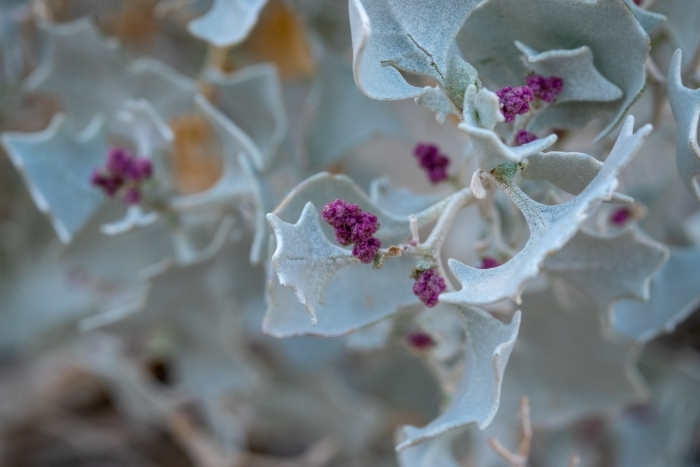Desert Holly
(Atriplex hymenelytra)
Desert Holly (Atriplex hymenelytra)
/
/

Shawn O'Donnell
CC BY 4.0
Image By:
Shawn O'Donnell
Recorded By:
Copyright:
CC BY 4.0
Copyright Notice:
Photo by: Shawn O'Donnell | License Type: CC BY 4.0 | License URL: http://creativecommons.org/licenses/by/4.0/ | Rights Holder: Shawn O'Donnell | Publisher: iNaturalist | Date Created: 2019-12-20T13:19:29-08:00 |






























































Estimated Native Range
Summary
Atriplex hymenelytra, commonly known as Desert Holly, is a perennial shrub native to the desert scrub and rocky slopes of the Mojave and Sonoran Deserts in the southwestern United States and into Mexico. Adapted to arid environments, it thrives in one of the harshest climates in North America, including Death Valley. Desert Holly typically grows as a compact, rounded bush, ranging from 8 to 48 inches (20 to 122 cm) in height, and is known for its distinctive reflective silver-gray foliage. The leaves are twisted, oblong, and many-pointed, which helps to reflect sunlight and conserve water. Desert Holly is deciduous under extreme drought conditions to further conserve moisture. It produces inconspicuous green female flowers from January to April.
Desert Holly is valued for its exceptional drought tolerance and unique silvery foliage, which adds a striking contrast in xeriscape gardens and desert landscaping. It is also used for erosion control on dry slopes. This shrub requires minimal maintenance, making it an excellent choice for low-water-use gardens. It is best grown in full sun and can tolerate a range of soil types, provided they have good drainage. While it can survive temperatures as low as −10 °F (−23 °C), it is sensitive to ground freezing. Desert Holly is not commonly affected by diseases or pests, but it can suffer from root rot if overwatered or planted in poorly drained soils.CC BY-SA 4.0
Desert Holly is valued for its exceptional drought tolerance and unique silvery foliage, which adds a striking contrast in xeriscape gardens and desert landscaping. It is also used for erosion control on dry slopes. This shrub requires minimal maintenance, making it an excellent choice for low-water-use gardens. It is best grown in full sun and can tolerate a range of soil types, provided they have good drainage. While it can survive temperatures as low as −10 °F (−23 °C), it is sensitive to ground freezing. Desert Holly is not commonly affected by diseases or pests, but it can suffer from root rot if overwatered or planted in poorly drained soils.CC BY-SA 4.0
Plant Description
- Plant Type: Shrub
- Height: 2-3 feet
- Width: 2-3 feet
- Growth Rate: Slow
- Flower Color: N/A
- Flowering Season: Spring
- Leaf Retention: Evergreen
Growth Requirements
- Sun: Full Sun
- Water: Low
- Drainage: Medium
Common Uses
Bank Stabilization, Low Maintenance
Natural Habitat
native to the desert scrub and rocky slopes of the Mojave and Sonoran Deserts in the southwestern United States and into Mexico
Other Names
Common Names: Desert Holly, Yuma Desert Holly
Scientific Names: , Atriplex hymenelytra, Obione hymenelytra,
GBIF Accepted Name: Atriplex hymenelytra (Torr.) S.Watson